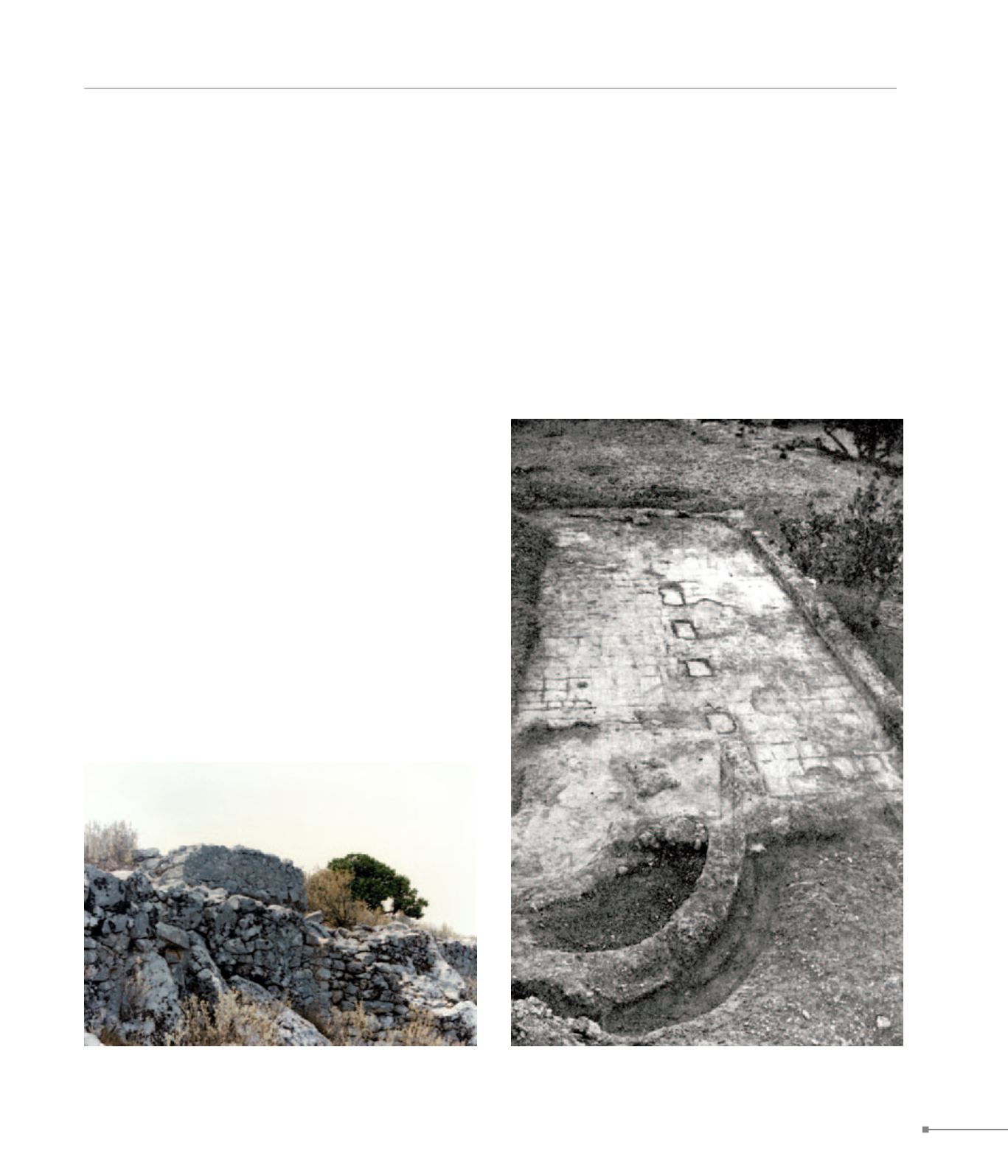
Dokos Islet.
Spetses.
PELOPONNESE
217
E of Ermione stretches the Bisti promontory, where the village
once stood, fortified since the 8th BC. In the Byzantine years
fortifications were reinforced with new towers, and in the W a
new wall was built of ancient material. This was demolished by
Abbot Fourmont, during Turkish rule, so that inscriptions and
sculptures could be gathered. Today the foundations survive.
276.
Dokos Islet
.
At the E end of the islet, on a hill at the Kastro site, the ruins of a
fortified settlement can be observed. A wall with three rectangu-
lar towers and three gates surrounded monumental buildings,
a basilica and cisterns, with indications that large-scale devel-
opment stretched around the fortress, on the three accessible
slopes of the hill. S of the fortress the modern church of Saint
John Theologos has been constructed above a three-aisled ba-
silica of the 7th c., as deduced from the visible building remains
and pottery. The settlement had two phases: the first in the 6th-
early 7th c.; and the second, which can be identified with the
reconstruction of Kastro by Morosini in 1680.
277. Spetses, Old Harbour, basilica at Mylos Vrousti (Σπέτσες, Παλαιό
Λιμάνι, Βασιλική στη θέση Μύλος Βρούστη)
276. Dokos, fortified settlement (Δοκός, κάστρο)
277.
Spetses.
The significance of Spetses Island in the Early Christian period
is attested by three three-aisled basilicas, one at the Old Har-
bour, below Evangelistria church (6th c.), a second at the Mylos
Vrousti site with a synthronon in the central apse, and a third
below the church of Aghioi Anargyroi. Part of a settlement con-
temporary with the basilicas has been revealed W of Evangelis-
tria church. A cemetery of the Roman and Early Christian years
has been detected W of the church of the Ascension.


